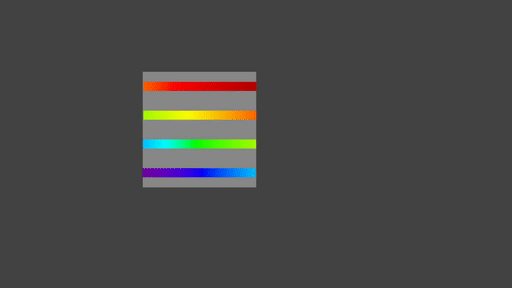
Documents
Etiquettes
Applications
Fabricant
Spectromètre compact ultra-haute résolution (Echelle)
Redback Systems propose une gamme de spectromètres à très haute résolution d'une compacité et d'un coût sans commune mesure avec les solutions existantes, rendant la très haute résolution compatible avec des budgets de spectromètres modulaires "classiques" beaucoup moins performants.
Le tout nouveau modèle RS10k est la version miniaturisée du modèle RS40k décrit ci-après. Il s'agit tout simplement du spectromètre Echelle haute résolution le plus compact et le moins cher du marché. Couvrant la totalité de la gamme 450-1030 nm avec un pouvoir de résolution de 17 000 à 10 000 suivant la longueur d'onde, il met fin au compromis jusque là nécessaire entre l'étendue de la gamme de mesure et la résolution spectrale. Et son prix est étonnament semblable à celui des classiques spectromètres modulaires (Czerny-Turner) pour des performances incomparables. Bénéficiant de plus d'un prix de lancement jusqu'en Décembre 2023, nous sommes à votre disposition pour tester vos échantillons ou pour une démonstration sur site.
Notez qu'une version NIR couvrant a gamme 950-1650 nm avec un pouvoir de résolution de ~15 000 est en phase finale de développement et sera prochainement disponible.
Le modèle RS40k, premier modèle introduit par Redback, est un spectromètre Echelle couplé par fibre, il utilise une dispersion croisée sur 2 directions orthogonales et permet d’atteindre simultanément une grande couverture spectrale (400-950 nm) et une résolution spectrale élevée (~16 pm) en une seule acquisition (pouvoir de résolution ~ 40 000).
Compact et n’utilisant aucune pièce mobile, le système est plus stable et moins coûteux que d’autres spectromètres offrant des performances comparables. L’utilisation d’un capteur CMOS haut de gamme permet également une grande sensibilité et des cadences d’acquisition élevées.
- Haute résolution et haute efficacité
- Conception compacte et robuste
- Personnalisation OEM disponible
- Logiciel de contrôle + SDK Python
Principales caractéristiques :
- Gamme spectrale : 400-950 nm
- Résolution spectrale : ~16 pm (FWHM) @632.8 nm
- Dimensions : 205 mm x 390 mm
- Interface : USB3.0
Knowledge Hub - What is an echelle spectrometer?
Many real-world spectroscopic applications benefit from obtaining high resolution spectra over a very broad wavelength range. The fidelity of a spectral measurement increases with resolution until the spectral features are fully resolved, which produces the highest contrast between spectral lines, and background; at the same time, recording the full spectrum provides a complete picture of the source characteristics.
However, recording broadband spectra at high resolution requires many individual photodetectors - conveniently, pixels in a semiconductor chip. As an example, at a resolution of R = 50,000 at 500 nm wavelength, a single resolution element captures only λ/R=10 picometer wavelength range. Sampling theory dictates that at least two pixels are required to properly sample a resolution element, so each pixel of a detector covers only 5 picometers of spectrum. A 2000 pixel wide detector can record only 5 nm of wavelength range at such a high resolution. To record spectra from 400 nm to 1000 nm wavelength would require a detector of several hundred thousand pixels length, with physical dimensions of meters – and matching optical elements as well.
An elegant solution to matching the format of high resolution spectra to area detectors that provide the required number of pixels in an approximately square format, is the use of echelle gratings (from French for “ladder”). Unlike normal diffraction gratings, which produce a single linear spectrum in diffraction order 1, these gratings make use of the fact that the product of wavelength and diffraction order of a grating is constant – 1000 nm in order 1 are diffracted in the same direction as 500 nm in order 2. An echelle grating is used in very high orders ~100, providing high resolution, but overlapping spectra. Using the same example, 500 nm in order 100 are diffracted in the same direction as 505 nm in order 99. The orders overlap every 5 nm; this is called the free spectral range of the grating (FSR).
As described above, 5 nm of spectrum can be conveniently recorded with a readily available 2000 pixel wide CMOS or CCD detector, at a resolution of 50,000. The problem remains that the detector cannot distinguish between the overlapping orders. This is solved by using a second dispersive element, a prism or a low resolution grating, that is oriented perpendicular to the echelle grating, and fans out the orders on the detector, so they are located in traces above each other. This effectively transforms the source spectrum into a stack of consecutive spectral traces on the detector, each of which cover a short spectral range with very high resolution. This enables the recording of broadband high resolution spectra in a single shot, which is why echelle gratings have long been the tool of choice for example in astronomical observations.
Dedicated analysis software is required to unwrap the stacked spectral orders, and merge them into a single, calibrated spectrum covering the full range. This requires precise wavelength calibration – matching the location of each pixel to a unique wavelength, and careful flux calibration to remove the intensity variation along each order caused by the wavelength-dependent efficiency of the optics and the detector, and in particular the intensity profile imprinted on each order by the grating (the so called blaze profile).
The animation above illustrates the principle of transforming a single spectrum into short, consecutive spectral orders stacked on top of each other, forming a ladder-like spectral format that can be recorded with an area detector providing a high pixel count.
- Site internet du fabricant
- https://www.redback.systems
